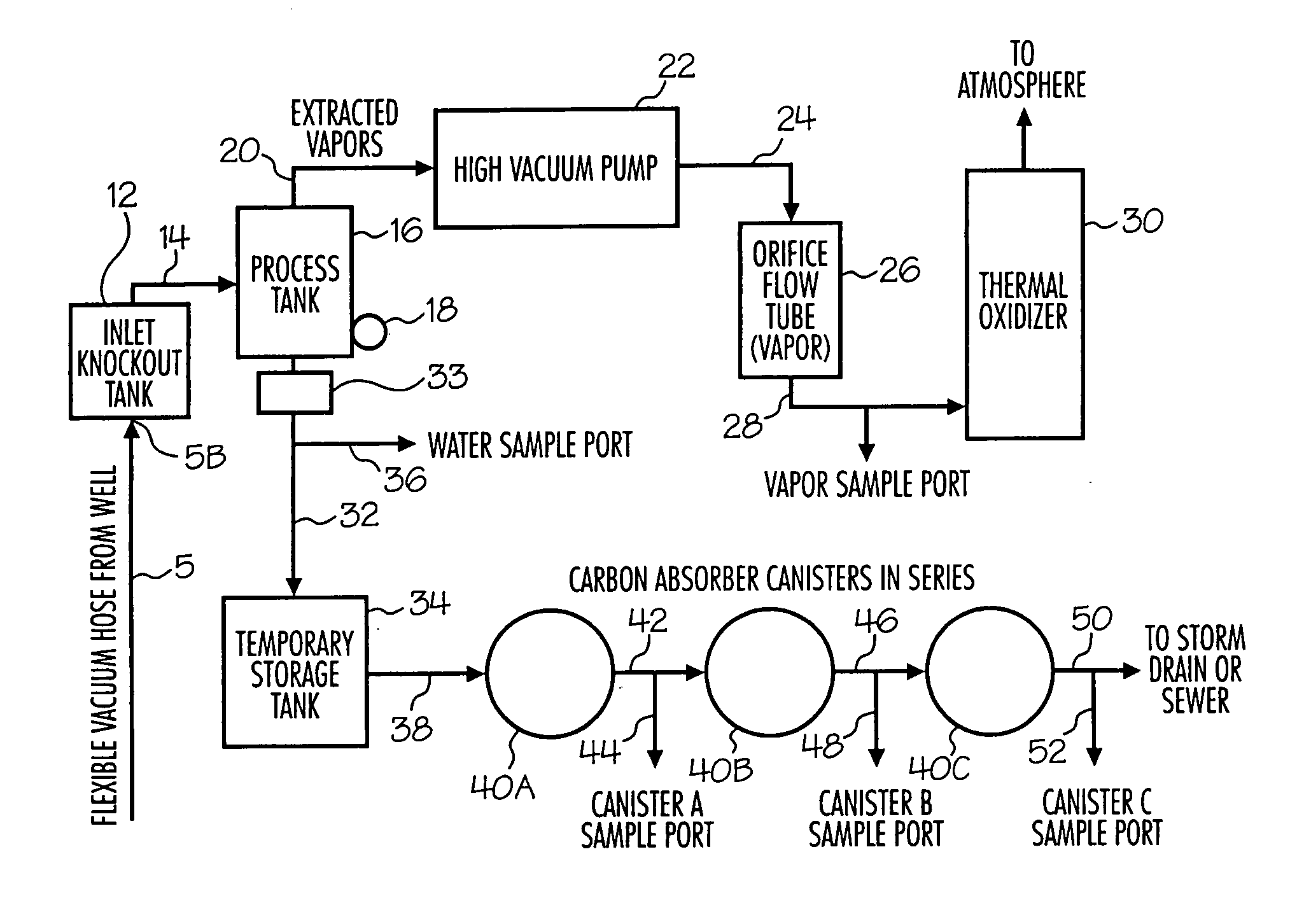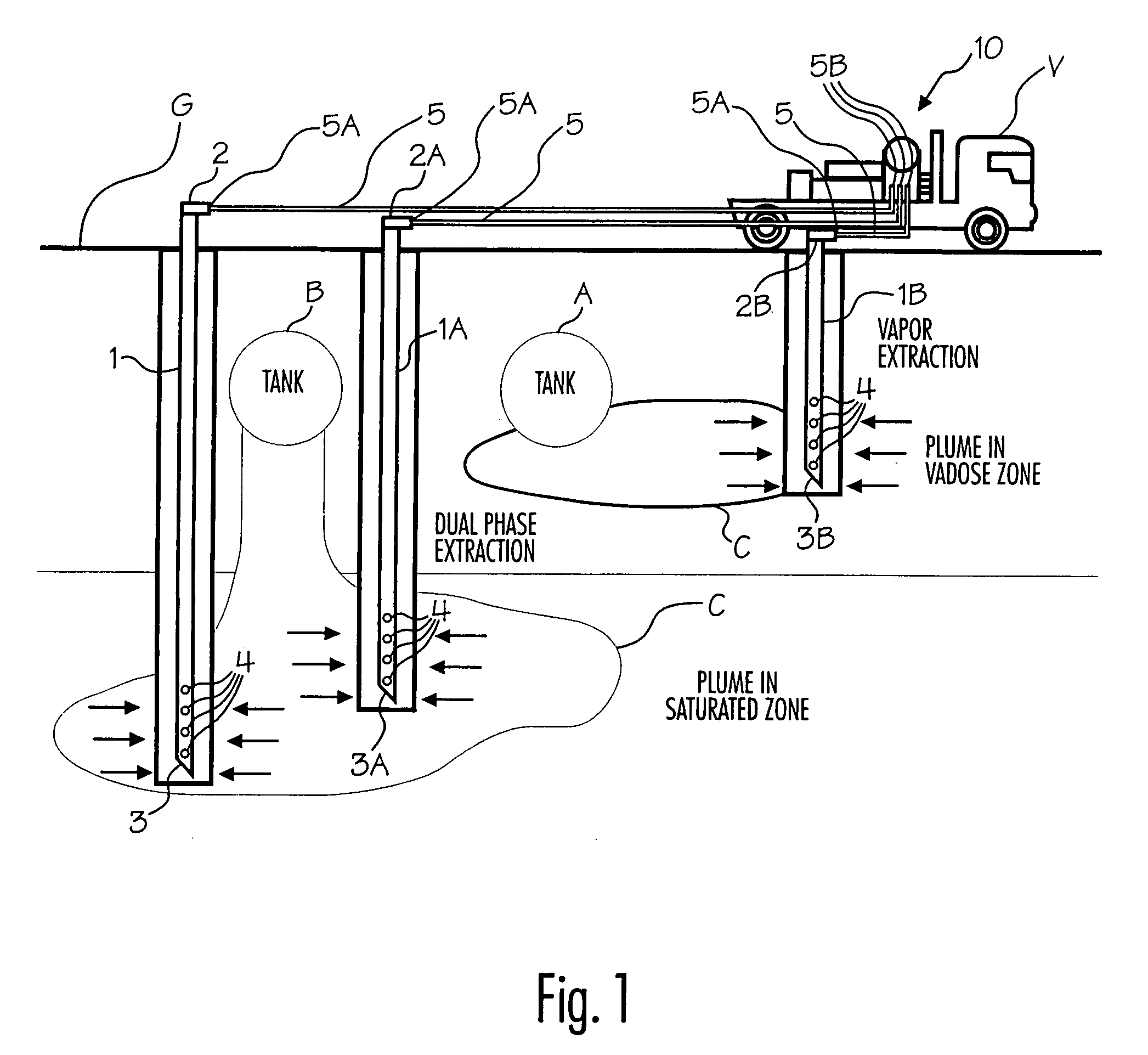Removing contaminants from groundwater
a technology for contaminants and groundwater, applied in vacuum distillation separation, vessel construction, separation processes, etc., can solve the problems of “breakthrough” of new tanks, soil and underlying groundwater may become contaminated with spilled or leaked hydrocarbons, and increase the cost of new tanks, so as to achieve faster site cleaning and cost
- Summary
- Abstract
- Description
- Claims
- Application Information
AI Technical Summary
Benefits of technology
Problems solved by technology
Method used
Image
Examples
example 1
[0036]The invention was used in a 24-hour dual phase (i.e., vapor and groundwater) extraction pilot test. The subject site had elevated concentrations of petroleum hydrocarbons, including the oxygenated gasoline additives MTBE and TAME, in the soil and groundwater.
[0037]The lithology of the site generally consisted of sand / silty sand 0-15 feet below ground surface (“bgs”), clay and silt / silty clay at 15-55 feet bgs, and sand / gravelly sand at >55 feet bgs. Shallow groundwater was located in a thin saturated zone at approximately 24 feet bgs.
[0038]The results of the extraction pilot test indicated an effective radius of influence of the extraction device of approximately 29 feet. Extracted groundwater was treated utilizing the system and method according to the invention on site to treat groundwater and expel water meeting applicable governmental standards. Approximately 495 pounds of hydrocarbons were burned during the 24-hour test. The results of the groundwater samples are presente...
PUM
| Property | Measurement | Unit |
|---|---|---|
| temperature | aaaaa | aaaaa |
| radius | aaaaa | aaaaa |
| temperature | aaaaa | aaaaa |
Abstract
Description
Claims
Application Information
 Login to View More
Login to View More - R&D
- Intellectual Property
- Life Sciences
- Materials
- Tech Scout
- Unparalleled Data Quality
- Higher Quality Content
- 60% Fewer Hallucinations
Browse by: Latest US Patents, China's latest patents, Technical Efficacy Thesaurus, Application Domain, Technology Topic, Popular Technical Reports.
© 2025 PatSnap. All rights reserved.Legal|Privacy policy|Modern Slavery Act Transparency Statement|Sitemap|About US| Contact US: help@patsnap.com



